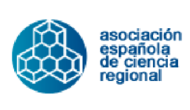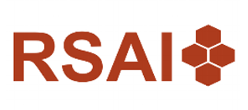Nicholas Charron, Víctor Lapuente, Monika Bauhr, Paola Annoni
Despite massive investments, studies suggest that anticorruption efforts often times fail and that countries and regions with historically deficient quality of government tend to be stuck in a vicious cycle of high levels of corruption and inadequate public service delivery. However, this study suggests that despite the stickiness of subnational quality of government, regional quality of government does shift over time. Using the 2021 European Quality of Government Index (EQI), and comparing the results to previous rounds of this survey, we show that there has indeed been noticeable shifts in the regional level of Quality of Government both within countries and across time. Overall, we find a slight increase in the perceived quality of government of European regions compared with 2017. However, some regions have evaded the positive trend, most notably in Poland and Hungary, whose response to the pandemic – probably not coincidentally – has involved important infringements of democratic rights and institutions. These changes in Quality of government call for a close mapping of the trends within countries and across regions and a focus on their determinants. To this end, the paper also serves as an introduction to the use of 2021 European Quality of Government (EQI) index, which is the most comprehensive survey to date to measure perceptions of subnational quality of government with a total of 129,000 respondents in 208 NUTS 1 and NUTS 2 regions and all EU 27-member state countries.
Keywords: Europe; regions; corruption; quality of government; time series; measurement; Covid-19
Wojciech Dyba, Eleonora Di Maria, Maria Chiarvesio
Industry 4.0, a concept comprising a range of promising innovations enabled by the recent advancements in digital technologies, has become a priority of industrial policy in many European countries and regions. In this paper, we present actions undertaken by regional organisations (including the so-called Digital Innovation Hubs), fostering the adoption of Industry 4.0 technologies in manufacturing companies. Using examples from Germany, Italy and Poland, we show actions that enable the creation of general conditions for such implementations and help companies develop an individual strategy for adopting Industry 4.0 innovations.
Keywords: Industry 4.0; support; actions; regions; Digital Innovation Hubs
Domingo Rodríguez Benavides, Owen Eli Ceballos Mina
Economic convergence studies in Colombia have shown mixed results. It is relevant to provide evidence that allows to focus public policy efforts to reduce the gaps between the country’s regions. This paper using Colombian departments and the district capital applies the Phillips and Sul (2007) test to evaluate the hypothesis of total convergence versus the presence of regional clubs in GDP per capita in 2000-2016. We found evidence of divergence for the entire country but multiple steady states and departmental convergence clubs if the main mining regions are excluded from the analysis.
Keywords: Economic-growth; convergence; nonlinear models; Colombia
Friederike Seifert
Economic growth might both increase and decrease income inequality, also at the city level. This paper examines the income-inequality relationship within US metropolitan areas and finds that it changes over time. A higher average income per capita level was associated with a lower inequality level in earlier years, but this association vanished later. For the 1980-2000 panel, increases in the average income per capita are associated with decreases in inequality. In contrast, increases in the average income per capita are asso-ciated with increases in inequality in the 2006-2016 panel. The obtained results hint at polarization re-sulting from technological change substituting middle-skill routine tasks.
Keywords: Inequality; income; metropolitan areas; United States
Felipe Torres Torres, Agustín Rojas Martínez
The purpose of this paper is to analyze the regional dimensions of food security, seen as a structural problem of development in Mexico during the period 2000-2020. The hypothesis is that the commercial opening implemented in the country under a framework of asymmetric economic development, widened its socio-territorial inequalities and with it the food insecurity gap. To investigate this phenomenon, we applied the Principal Component Analysis (PCA) and Dalenius-Hodges stratification methods, with which we built a measurement index at municipal and regional scales. The results obtained indicate that, seen both by number of regions and population proportion, more than half of Mexicans face some degree of food insecurity. Reversing this situation implies deploying a food policy aimed at recovering self-sufficiency in the production of basic grains and guaranteeing access to food, mainly by improving income among the population located in the ranges of poverty and extreme poverty.
Keywords: Food security; regional inequalities; agricultural policy; municipal and regional food security index; principal component analysis method
María Soledad Campos Lucena, África Ruiz-Gándara, María de Magdala Pérez Nimo, Francisco Javier Ortega Irizo, Francisco Velasco Morente
Objectives: This paper seeks to detect, in the Spanish health system, which health services are efficient, and which are not, as well as propose corrective measures that allow inefficient health services to achieve efficiency. Methods: This paper applies the Data Envelopment Analysis (DEA) methodology, which allows obtaining natural and managerial efficiencies, as well as deviations from inefficient units in relation to efficient ones and proposing corrective measures that imply only budgetary (natural) modifications or changes in the policies of resource management (management).
Results: Through the efficiencies, or the lack of them, the health services of the 17 Spanish autonomous communities are classified into four groups: With high, medium-high, medium-low or low natural or managerial efficiency.
Conclusions: The lack of natural efficiency can be corrected with a greater budgetary endowment and the lack of managerial efficiency with a budget cut and changes in resource management policies. This tendency contrary to the adjustments is precisely what gives this work of interest and novelty with respect to others that apply the DEA in different sectors such as those that study the impact on the environment of resource consumption. Another important aspect of this study is the possibility of applying it to other countries with similar political structures.
Keywords: Data envelopment analysis; natural efficiency; managerial efficiency; cluster analysis; Spanish Health System
Leonardo J. Mastronardi, Carlos A. Romero, Sebastián N. González
This paper presents a regional case study using a Bi-Regional Input-Output (BRIO) matrix of Buenos Aires City (BAC) and the Rest of Argentina (ROA), constructed from the Argentinian Input-Output matrix. A hybrid approach was applied to obtain the BRIO matrix, which combines pure non-survey methods with matrix-balancing methods like RAS or Cross-Entropy. Once the BRIO matrix was obtained, our study has focused on analyzing the BAC regional structure and the interconnections between regions. We have also estimated the regional and national carbon footprint for the BAC and Argentina, respectively. Results show that service and industry sectors play an important role in the economy of BAC and some of them have strong interregional spillover effects over the rest of the country. In addition, the results also show that sectors on BAC with the highest regional multipliers are also the ones with highest emissions.
Keywords: Interregional input-output model; carbon footprint; bi-regional input-output tables; location quotients; cross entropy


